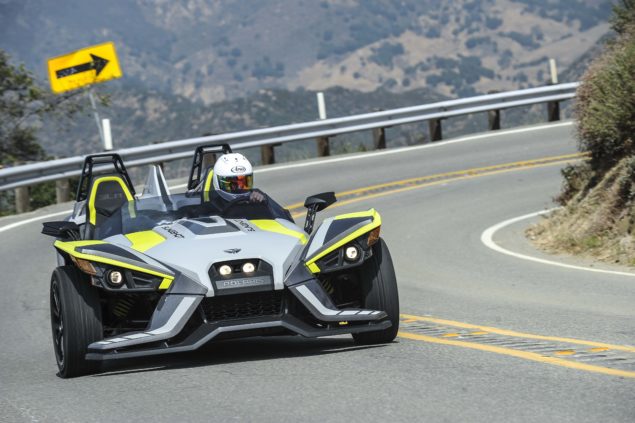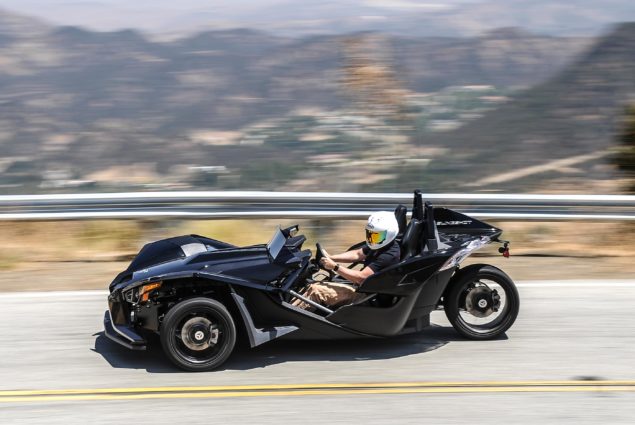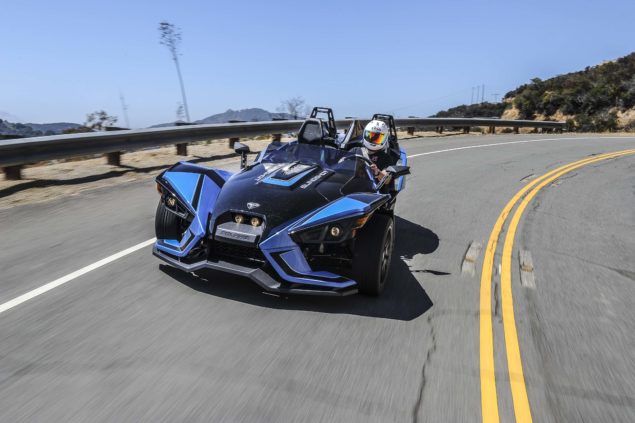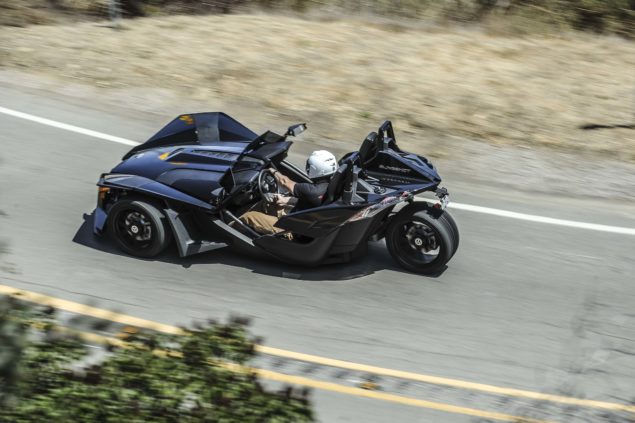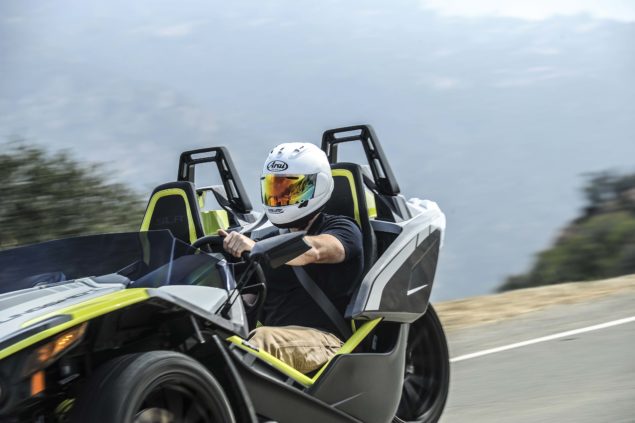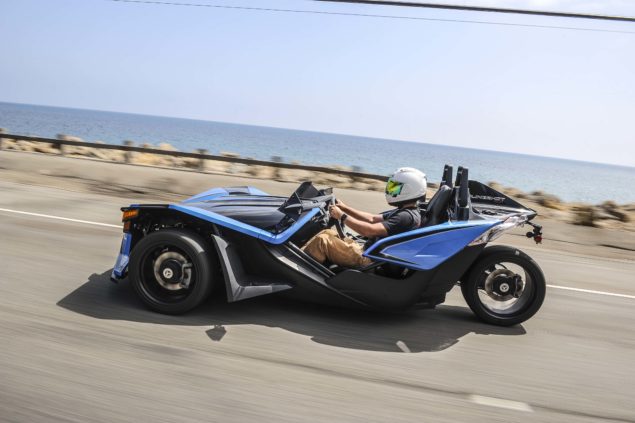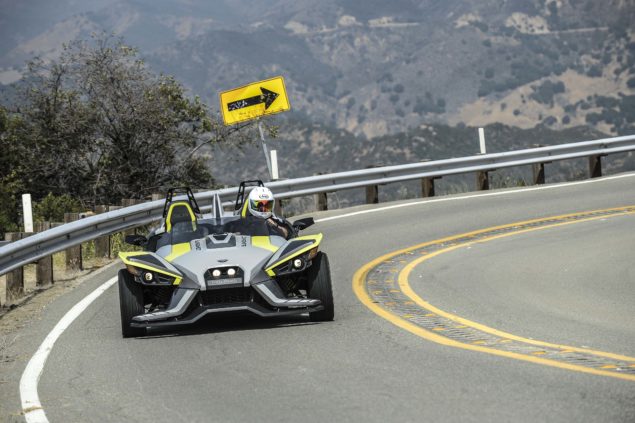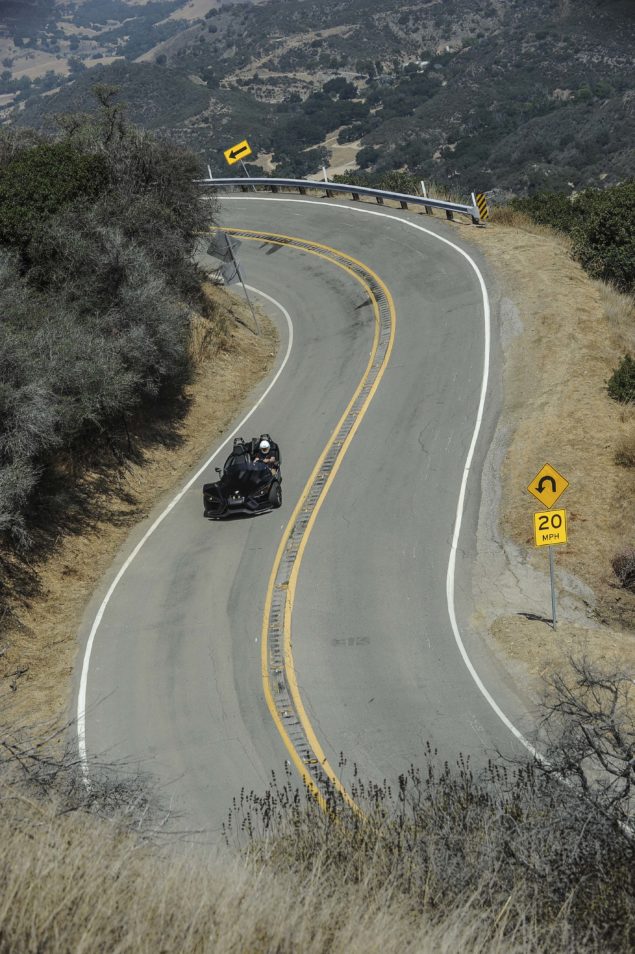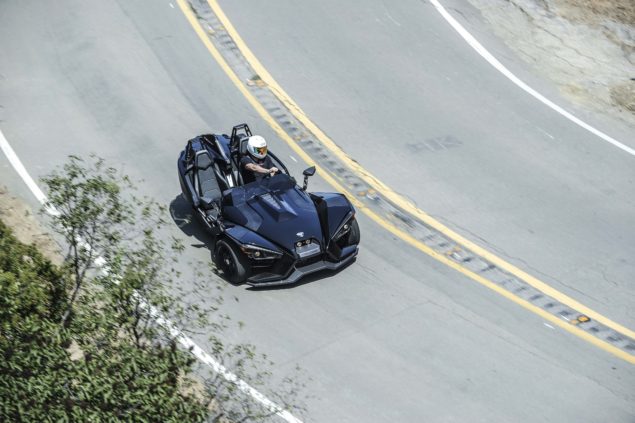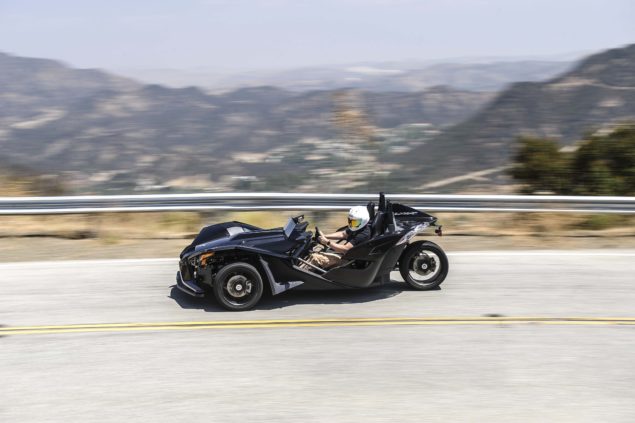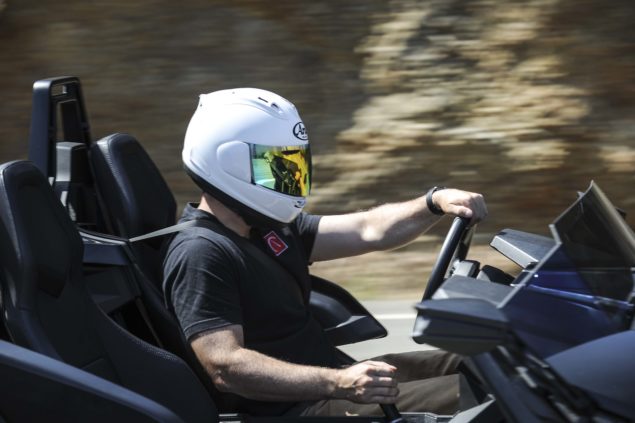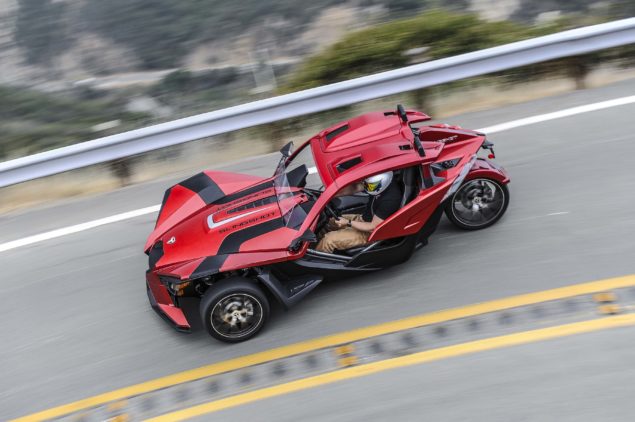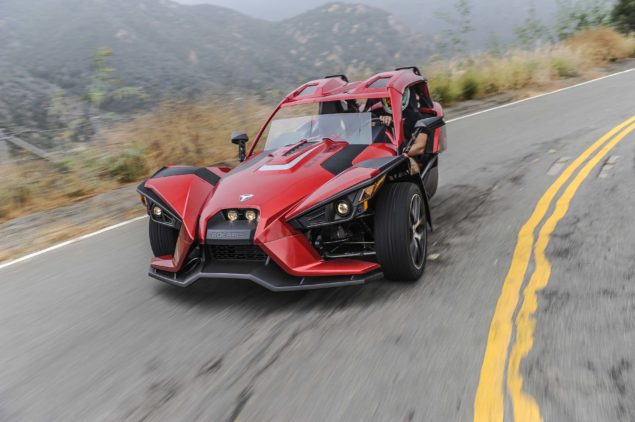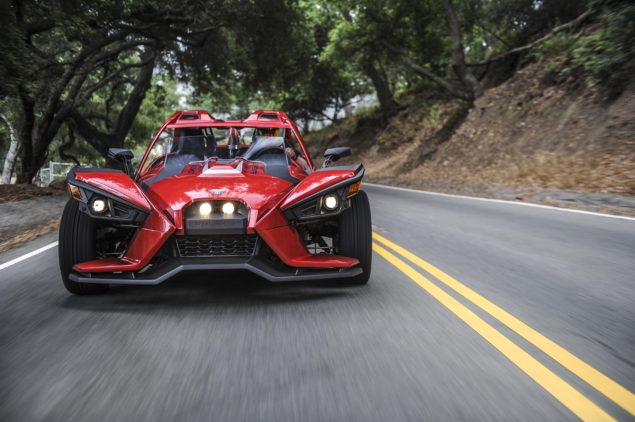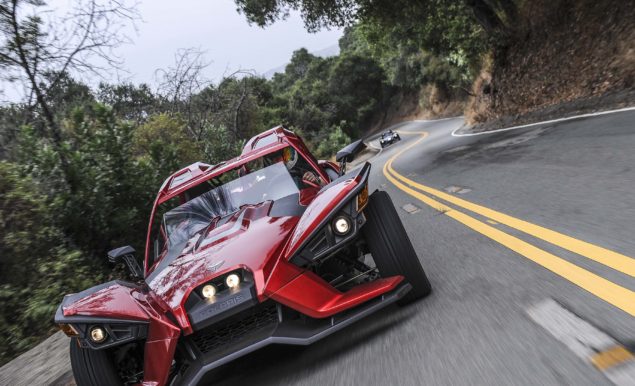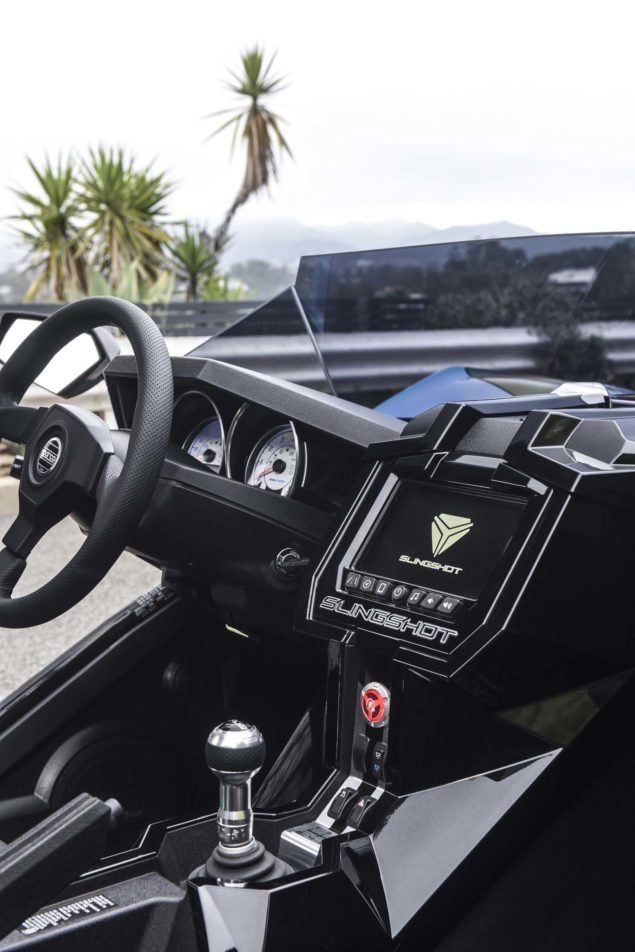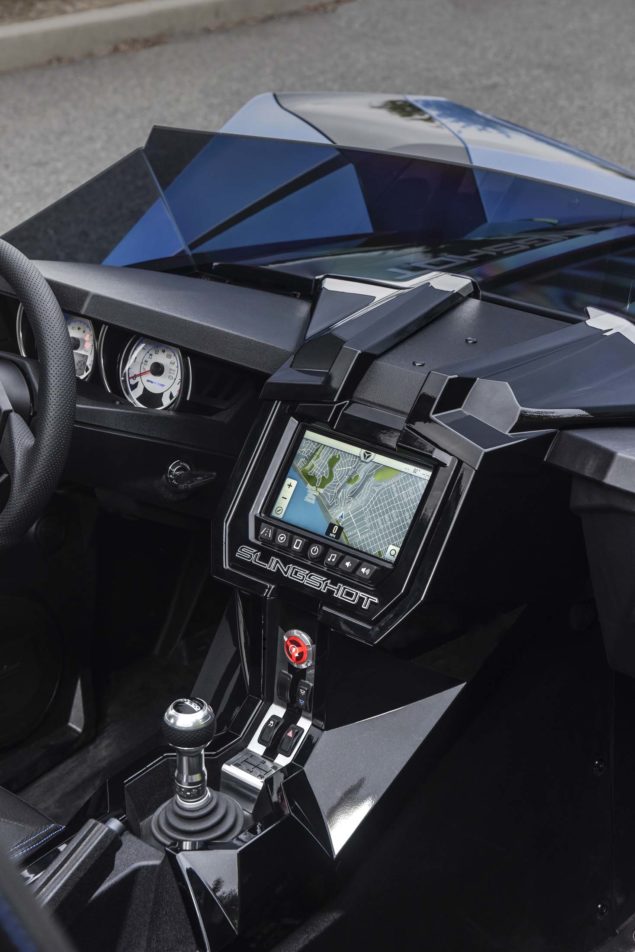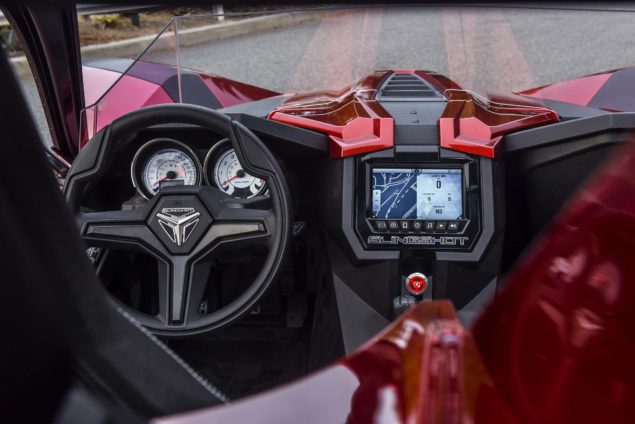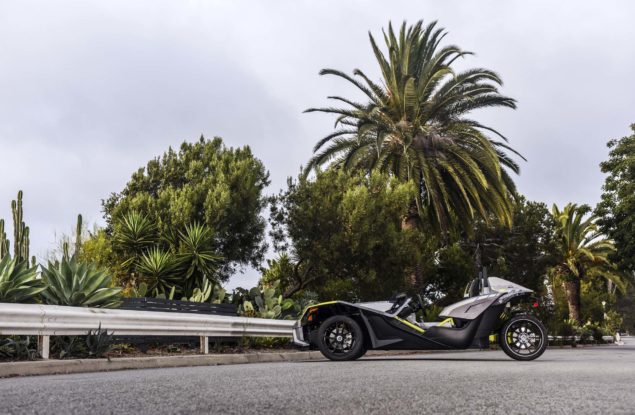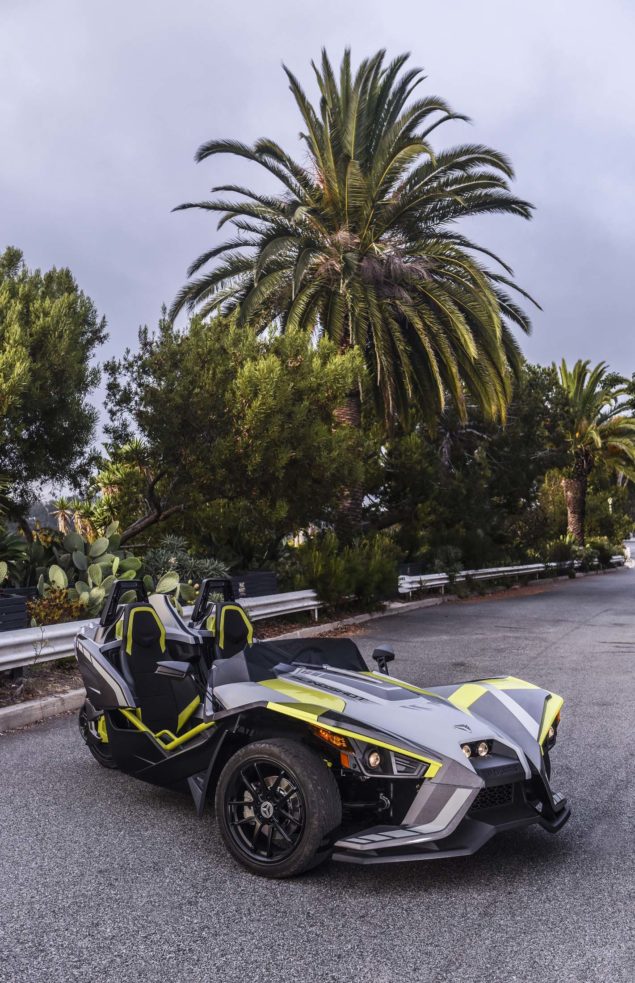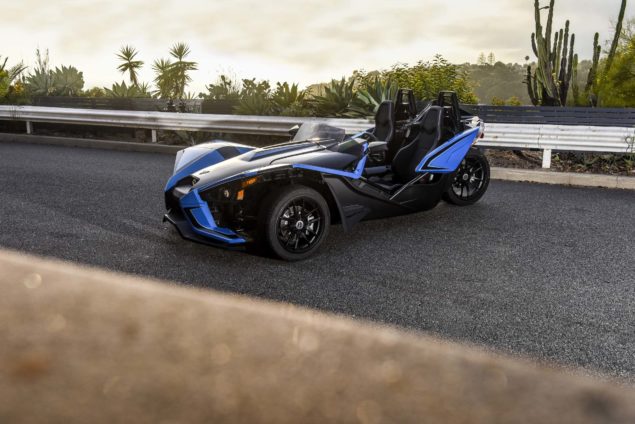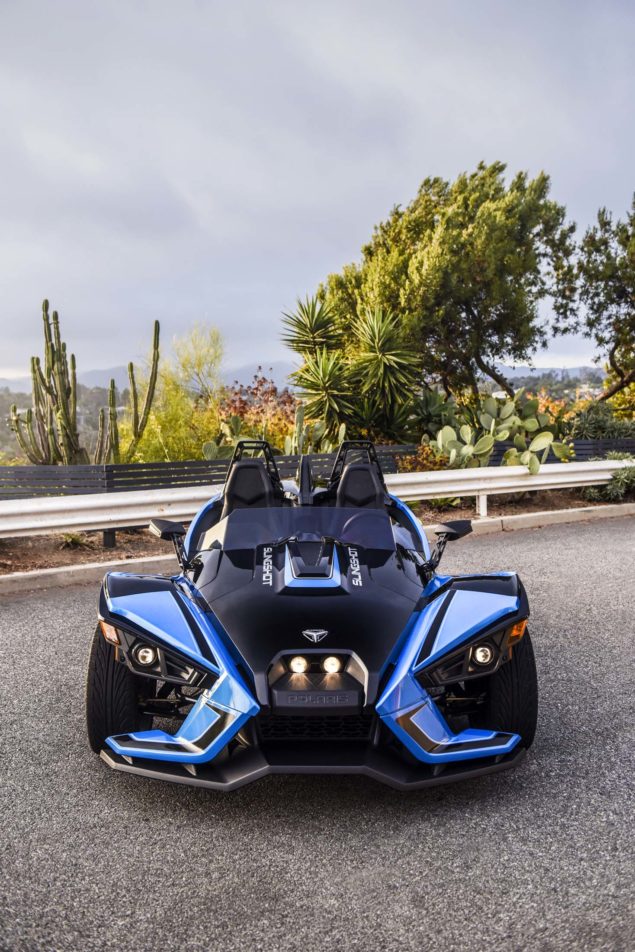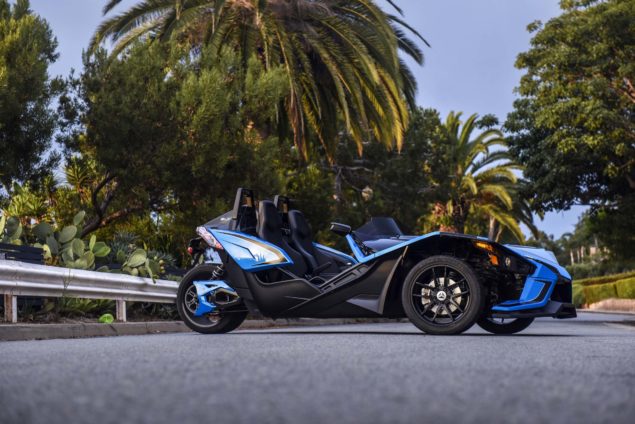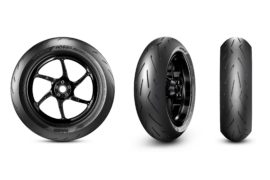This past week was the first time I have ever driven a motorcycle. I have ridden quite a few motorcycles in my time, just never one with three wheels, a seatbelt, and steering wheel. It felt very weird…like riding a scooter.
The Polaris Slingshot is not a motorcycle though. Three years after its initial debut, the Slingshot is now considered an autocycle in 40 states and counting.
As an autocycle, the Polaris Slingshot is held to the same standards as a motorbike, but these 40 states do away with the requirement for the rider, I mean driver, to have a motorcycle endorsement on their license.
Armed with a normal driver’s license and a helmet (where applicable), there are no boundaries to driving a Slingshot. This opens interesting doors for Polaris, which is good, because the Slingshot is an interesting machine. Let me explain.
A Preface
I should start by saying what the Polaris Slingshot is not, and it is not a motorcycle.
There is a warning sticker between the twin seats that challenges this notion, and while it is legally correct, that sticker is also a dirty, dirty liar.
This is a car. A very sporty, very light, and very affordable car…just don’t tell the lawyers that.
That being said, I am not a car journalist. I like cars. I own a couple, and I think they are neat – in the same way a vanilla milkshake is neat.
If you came here expecting a car review (go home, you’re drunk), I suggest reading the words from one our four-wheeled colleagues. They will tell you all about synchromesh and axis of over-steer, while impressing you with their fancy heel-and-toe shifting.
For our purposes though, we shall embrace the Polaris Slingshot as we see it: a competitor for hard-earned consumer discretionary income.
After all, the Polaris Slingshot doesn’t compete with the motorcycles in our garage as a another two-wheeled vehicle – instead it competes for our hard-earned cash, for things that are fun and go fast.
The “Riding Experience”
If you have driven a sporty convertible before, then the Slingshot should feel right at home. Power is made from a 2.4-liter GM Ecotec engine, whose four-cylinders of fury produce 173hp and 166 lbs•ft of torque.
Mate this to the 1,749 lbs three-wheeled chassis, and it is easy to see why Polaris has sold 20,000 Slingshots in only three years.
By car standards, the Slingshot is light and powerful. It is also cheap, with the new-for-2018 Polaris Slingshot S being priced at $19,999 – though if your wallet can afford it, there are three more models between there and the top-of-the-line $30,999 price point.
As you might expect, driving a three-wheeled car is a lot like driving a four-wheeled car…with some caveats.
When it comes to handling dynamics, the Polaris Slingshot is the mullet of the automotive world. The front is all business and very planted, even with the disappointing Kenda tires mated to the two front wheels (forged on the SLR models, cast on the SL and S versions).
Meanwhile, the rear of the Slingshot is all party in the back, with the solitary rear wheel being easy to spin-up in a straight line and drift around corners. Being able to turn off the traction control with the flick of a switch helps in this regard as well.
It should be noted that we spent most of the time on the optional 305mm-wide rear tire in a 20″ wheel size, which provided considerably more grip than the smaller 255mm (SL) and 265mm (S) configurations, at the cost of some decreased turning speed.
The overall handling of the Slingshot leaves something to be desired as well, with the steering inputs being vague and slow. Making a sharp turn will leave your turning, and turning, and turning the wheel, as you hunt for your apex, which detracts from the otherwise go-kart-like experience.
On the bright side of the equation though, the Bilstein suspension on our ride was fully adjustable (preload, compression, and rebound) on the shocks fore and aft, which should be a boon to those looking for more spirited driving, or a more relaxed touring experience.
During our drive through the California coastline, our suspension was set on the middle setting of the three shocks, which offered a ride that was firm, but still able to soak up the harder bumps that Caltrans had to offer, which was a pleasant surprise.
While the Slingshot is rewarding when you put the hammer down, stopping the fun is less of a joy, with the brakes on the Slingshot being obviously soft and squishy, while the ABS unit is a bit intrusive during spirited driving (though, this could just as easily be the Kenda tires showing their true colors).
The poor brake feel and slow turn-in, coupled to the otherwise cheap feel of the Slingshot’s weather-proof interior, only serves to continue Polaris’s reputation for mediocre build quality.
At the entry-point Slingshot S model, this cheapness is perhaps forgivable (though it feels very “base model” with the absence of the “Ride Command” radio/nav unit); however, on the more expensive SL and SLR models, one has to wonder if they really are vehicles that feel like a $25,000 to $30,000 machines.
Making the price-point difference even more troublesome is the lack of differentiation between the models on-hand. While the Slingshot S was clearly the price-point offering, the SL, SLR, and SLR LE offered little beyond the in-dash infotainment system for their added value.
The real-world differences between the different seats, controls, and wheels options were minimal. And while the more premium paint schemes looked great, it is hard to find thousands of dollars in value in them.
For our money, the S model with the Ride Command option is about as much money as we would spend on the Polaris Slingshot, which at $22,500 puts it in tough competition with four-wheelers at the same price point…cars that also happen to come with considerably more safety regulations, we should point-out.
An Awkward Talk About Protection
Of course, the whole thing you have to keep in mind at the end of the day is that the Polaris Slingshot is not a car. It’s a motorcycle. The safety sticker told you as much. Remember?
This means that the Polaris Slingshot isn’t subject to the same safety standards as say a Mazda Miata. It doesn’t come with airbags or crumple zones. It hasn’t been rigorously crash-tested and rated by the IIHS.
The safety standards that we take for granted in today’s automotive sector, don’t even apply to the Slingshot, because again…it is a motorcycle. To its credit though, Polaris ships every Slingshot model with ABS brakes, traction control, and vehicle stability control.
Visibility aft and to the sides is compromised by the Slingshot’s tail section and ample blind spots. Also, once you are in the Slingshot, you are up a creek if the passenger-side mirror isn’t pointed where you want it.
It is a manual adjustment only sort of affair (did I mention the Slingshot feels featureless and cheap?), and unreachable from the driver’s seat.
When I talk to Slingshot owners about the safety of their machine, the line I usually get is “it’s best not to think about it.” I don’t think it is a coincidence then that the pre-ride discussion amongst the assembled journalists focused on life insurance, and requests for solo rides.
In the motorcycle world, we accept the risks that come with riding a motorcycle. It is part of the trade. But, cars aren’t bikes when it comes to how they deal with road hazards, but in this regard, the Polaris Slingshot is more of a car than a motorcycle.
Final Thoughts
As you might expect, my closing words on the Polaris Slingshot are a mixed bag. The Slingshot is immensely fun to drive. The type of fun it brings is certainly different from a motorcycle, and certainly much closer to a car, but it is also ultimately a recreational vehicle.
Like motorcycles, the Slingshot is competing in the “dollars for smiles” category, and on that level its offers quite a bit. Every petrolhead should give one of these three-wheeled cars autocycles a spin. You will come away grinning, this much I’m sure of.
When it comes to ownership though, the proposition of buying a Polaris Slingshot with my hard-earned blogging dollars gets more muddled.
I can fit nine motorcycles into the same piece of garage space that a Slingshot would require in my home, and at both ends of the Slingshot price spectrum there are some serious four-wheelers to consider for that real estate in my garage, like the Mazda Miata and the BMW 2-Series.
Of course, neither of those cars are going to turn heads like a Slingshot does. Not even close. And too, I am going to have a much easier time convincing a non-riding friend to hop into a Polaris Slingshot, than I would on the back of my motorcycle.
With rolling burnouts on tap, drifting donuts just a rear-wheel away, and an approachable form factor, the Polaris has all the strengths of a small and peppy four-wheeler. But, it also comes with a bag full of negatives.
I find it weird as motorcycle journalist that the big sticking point for me with the Polaris Slingshot is safety. I’m also put off by the build quality on the Slingshot components, which feel very cheap.
Cheap and unsafe are two words you don’t want to hear when it comes to a car, three-wheeled or four, and that’s the hurdle that Polaris will have to overcome with its future machines.
When it comes to dollars-per-smiles there are four-wheeled machines that bring more to the table. There are better two-wheeled options as well.
For a select few however, the fun-on-tap and Batman-like looks of the Polaris Slingshot will overshadow all the cons I just listed. And that is fair too, because the Slingshot is fun to drive, and it manages to make friends every time you drive it around town.
It’s worth pointing out, I bought my last motorcycle for those same reasons…
Photos: Polaris

